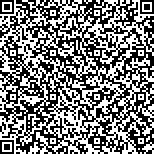下载中心
优秀审稿专家
优秀论文
相关链接
摘要

合成孔径雷达SAR(Synthetic Aperture Radar)是开展城市建筑区信息获取与动态监测的重要数据源。本文建立了一个面向深度学习建筑区提取的中高分辨率SAR建筑区数据集SARBuD1.0 (SAR BUilding Dataset)。该数据集包含了覆盖中国不同区域的27景高分三号(GF-3)精细模式SAR图像,并从中获取了建筑区共计60000个SAR样本数据,结合光学图像与专家解译,制作了与样本数据对应的标签图像。SARBuD1.0数据集包含了不同地形场景类型、不同分布类型、不同区域的建筑区。该数据集可支持研究者对建筑区进行图像特征分析、辅助图像理解,并可对当前热点深度学习方法提供训练、测试数据支持。本文以山区建筑为例,使用传统纹理特征与深度学习特征对建筑区进行了特征分析与比较,相比于传统的人工设计的纹理特征,卷积神经网络具有更深、更多的特征,利用网络模型浅层的不同卷积核采样可得到各种纹理特征,在网络的深层卷积结构中可获取代表着类别的深层语义特征,使得分类器能更好地检测并提取图像中指定的目标。基于本数据集利用深度学习方法对不同地形区域的建筑区进行提取实验。实验结果表明基于本数据集训练的深度学习模型,对建筑区提取可以取得良好的结果,说明该数据集可以很好支持面向大数据的深度学习方法。其他学者可以基于SARBuD1.0数据集开展建筑区图像特征分析与语义分割提取等方面的研究。
Synthetic Aperture Radar (SAR) is one of the important data sources for built-up area information acquisition and dynamic monitoring. In this paper, SARBuD1.0, a SAR image patch dataset of built-up area with GF-3 Fine strip-map mode, is introduced.The dataset is derived from 27 scenes of 10 m resolution GF-3 SAR images covering different regions in China. Approximately 60000 samples of built-up area are obtained from the SAR images. The dataset consists of built-up area SAR image patches and corresponding label images that are interpreted by experts with high-resolution optical images. The dataset contains built-up areas of different distribution types and different regions. The terrain scenes of the samples include plain area, mountain area, and plateau. The SARBuD1.0 dataset can support researchers to analyze the image features of built-up areas in different regions, assist in SAR image understanding, and provide training and test data for deep learning methods for built-up area segmentation in SAR images.In this paper, using built-up areas in mountain areas as an example, the traditional texture features and deep learning features of the built-up area are analyzed. Experiments show that a convolution neural network can provide deeper features of built-up areas compared with traditional texture features. Features in different scales can be obtained by the shallow convolutional layers of the network, and semantic information can be obtained by the deep layers. Therefore, the deep convolutional neural network classifier can detect and extract the built-up area better. Based on the dataset, three deep learning methods are applied to extract the built-up area in different terrain areas. The experimental results show that the deep learning models can achieve good results for built-up area extraction based on the dataset.The dataset can effectively support the deep learning method for big data processing. Based on the SARBuD1.0 dataset, scholars can carry out research on feature analysis and semantic segmentation of built-up areas with SAR images.

